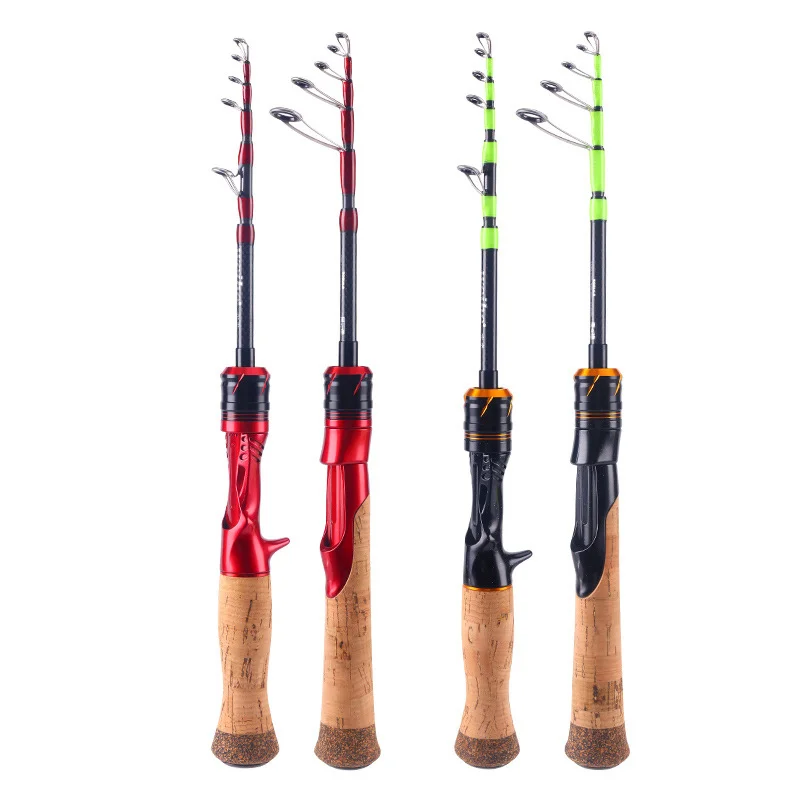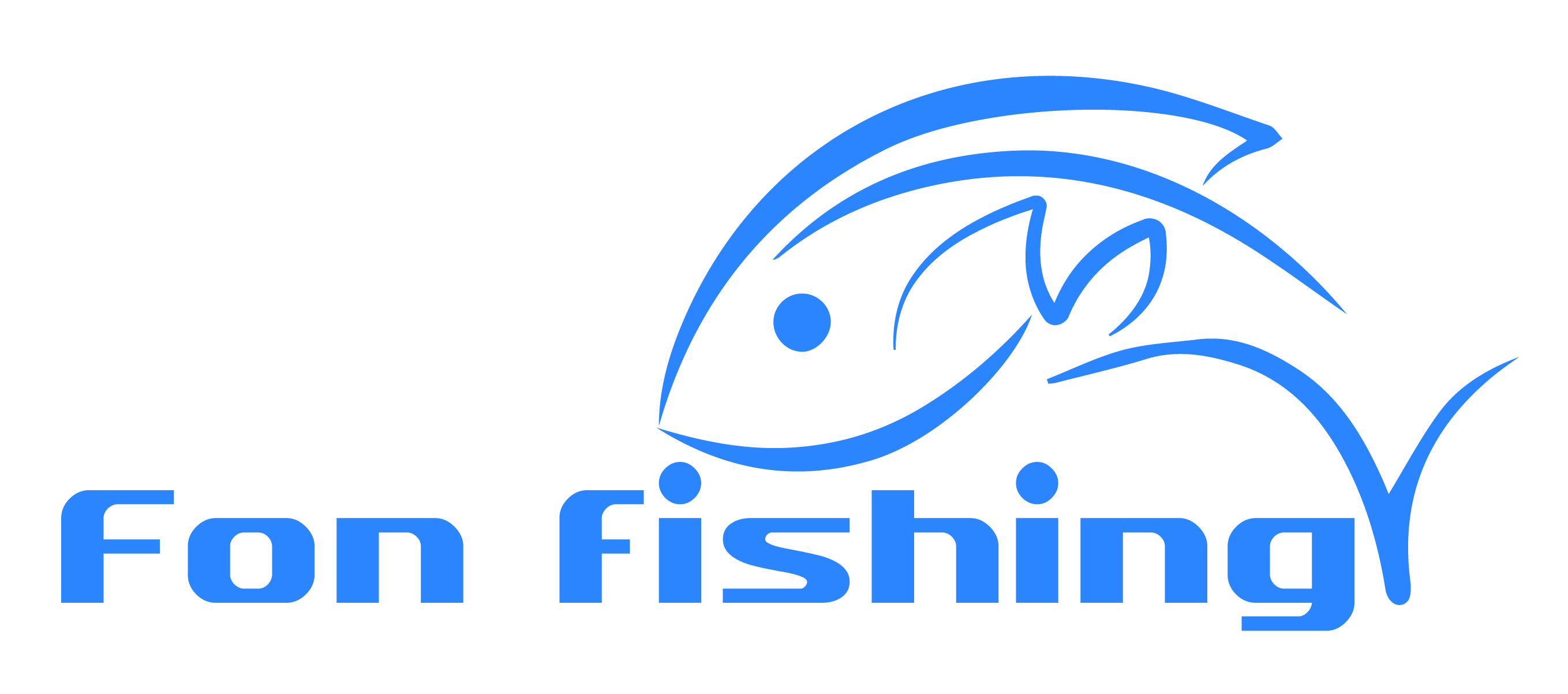Fly fishing from shore presents unique challenges and opportunities, where the choice of rod length can make or break your success. Whether you’re casting to distant trout holding beyond a river’s drop-off, battling wind on an open lakeshore, or navigating tight banks with overhanging cover, the right fly rod length is critical for maximizing control, distance, and precision. This article explores how rod length impacts casting performance, line control, and adaptability to diverse shoreline conditions. Drawing on expert insights and the high-performance designs of Laike’s rods, it will guide you through selecting the ideal setup to elevate your shore-based fly fishing game, no matter your target species or environment.

Selection of Fly Rod Length
How Does Rod Length Affect Your Casting Distance from Shore?
When casting from shore, the length of your fly rod plays a pivotal role in achieving optimal distance. A longer rod—typically in the 9 to 10-foot range—enables you to generate higher line speed and a larger casting arc. This translates to longer casts, especially when you’re trying to reach fish holding beyond the first drop-off or structure. In open water scenarios, such as lakeshores or wide riverbanks, this extra reach can be crucial.
Shorter rods (under 9 feet) are more maneuverable but limit your casting range. If you’re targeting fish close to shore or navigating tight spaces, they may suffice. But for most shore-based fly fishing applications, especially where distance matters, longer rods provide a clear advantage.
Why Is Rod Length Critical for Line Control and Mending?
Longer rods allow for easier mending—lifting and repositioning the line without disturbing your fly. This is essential when dealing with varying currents or drag-inducing crosswinds common along shorelines.
A 10-foot rod provides better reach over conflicting surface currents and allows you to high-stick for better drift control. The rod body can bend smoothly, and uses the rebound force of the highly elastic rod body material to pull the fish out of the water, making the operation more sensitive, improving the accuracy and casting performance of long-distance casting. These features make longer rods indispensable when fishing from banks with complex water flows.
How Do Wind and Terrain Shape Rod Performance?
Wind is an ever-present challenge in shore casting. A slightly heavier line weight combined with a longer rod helps punch through headwinds or crosswinds more effectively. Terrain also dictates rod choice—tight banks with overhanging trees favor shorter rods for maneuverability, while open terrain benefits from added length for broader coverage.
Even in strong winds, it can be cast accurately, and the fishing group can be controlled at will. This makes longer rods more versatile in unpredictable weather conditions commonly encountered during shoreline fishing.
How Should You Pair Fly Rod Length with Line Weight When Casting from Shore?
Relationship Between Line Weight and Rod Action
Line weight must match both your target species and your rod’s action profile. Fast-action rods pair well with heavier lines (6WT–8WT), offering quick response and powerful hook sets—ideal when wind resistance is high or larger flies are required. Fast-action rods bend at the uppermost part, right below the tip. They’re sensitive to the lightest of nibbles, sending vibrations straight to your hand.
Combinations that Work Best in Shore Environments
For general-purpose shoreline fly fishing:
- 9’0” 6WT: balanced for moderate wind and versatile enough for trout or bass.
- 9’6” 7WT: ideal for windy conditions or casting larger streamers.
- 10’0” 5WT: excellent for delicate presentations and advanced line control techniques like mending across seams.
Each pairing offers a blend of power and finesse tailored to different shoreline conditions.
Balance of Power vs Finesse in These Scenarios
You’ll often need both power—to cast far or into wind—and finesse—to present flies naturally in calm pockets near structure. A mid-weight rod, like a 6WT, offers this dual capability well. If you’re leaning toward bigger species or battling wind consistently, bump up to a 7WT.
Composite fishing poles give you all the flexibility you need without adding much weight or sacrificing sensitivity, making them a suitable choice when you’re balancing these two needs on foot along shorelines.
What Makes Laike’s Fly Rods Ideal for Shore Experts?
Before diving into specific models, let’s introduce why so many seasoned anglers rely on Laike gear. Tianjin Laike Co., Ltd is an enterprise specializing in the manufacture of fishing gear products for more than 10 years. Their extensive experience has culminated in high-performance designs tailored for real-world angling situations, including shoreline fly fishing where precision matters most.
They offer fast delivery times, OEM/ODM support, and export globally, making them not just reliable but also accessible no matter where you fish.

Each Performance Series Rod Serves Specific Shore Conditions
9’0” 6WT – Versatility Meets Precision across Varied Shorelines
This model excels when you’re switching between dry flies near rocky banks and streamers off sandy flats. Its moderate length maintains maneuverability while still offering enough reach for effective mending.
9’6” 7WT – Extra Reach with Wind Resistance Built-In
When wind becomes an issue—or if you’re targeting bigger species like bass—the added length helps stabilize casts while maintaining tight loops even with bulky flies. The heavier line weight aids turnover under adverse weather conditions.
10’0” 5WT – For Advanced Control over Complex Currents
If your priority is precise drift control across multiple current seams from shore, this model delivers exceptional mending capability thanks to its extended length. It shines in riverbanks with deep drop-offs where presentation trumps brute force.
Material Quality and Construction Standards
High-Modulus Carbon Fiber Enhances Strength without Weight Penalty
Laike’s high-performance fishing rod can effectively make up for the shortcomings of fishing skills and significantly improve the efficiency of attracting fish. The use of lightweight yet rigid carbon ensures durability under pressure while keeping fatigue at bay during long sessions.
Ergonomic Grips Paired with Saltwater-Resistant Components
The handle is made of cork, with good texture and feel, giving you comfort during extended use; meanwhile imported FUJI guide ring, whose anti-entanglement effect is more obvious, ensures smooth line flow even under tension—a must-have feature when battling large fish near submerged structures.
Which Setups Work Best For Different Shoreline Conditions?
Open Lakeshores With Crosswinds
Recommended Setup: 9’6” 7WT
This setup cuts through gusts while maintaining accuracy at range—ideal when covering large expanses from exposed banks where wind is inevitable.
Along Tight Banks With Overhead Cover
Recommended Setup: 9’0” 6WT
Its compact size allows pinpoint accuracy under branches without compromising too much on distance—a great option when stealth matters more than reach.
Wide Rivers With Deep Drop-Offs Near Shore
Recommended Setup: 10’0” 5WT
This configuration gives you superior drift control across varying depths without stepping into potentially dangerous currents—a perfect match for technical riverbank presentations requiring finesse plus reach.
How Do You Choose Based On Target Species Near Shorelines?
Targeting Trout Close To Bankside Structure
Ideal Choice: Precision Series – 9’0” 5WT
It offers subtle presentation capabilities needed when trout hold tight against undercut banks—a combination of finesse tip action with backbone strength makes it ideal here.
Bass Or Pike Along Weedy Lake Margins Or Rocky Shores
Ideal Choice: Power Series – 9’6” or 10’0” in 7WT
These setups deliver heavy flies accurately into cover zones without collapsing loops—essential traits when chasing aggressive predators that demand strong hooksets through bone-hard jaws.
Final Considerations of First Fly Rod Purchase
Should You Prioritize Portability or Performance in Multi-Piece Designs?
Modern multi-piece rods offer excellent performance while being travel-friendly, but always ensure ferrule alignment stays intact after repeated use if hiking into remote shoreside spots frequently.
Why Must Reel Size Match Longer Rods for Proper Balance?
Longer rods require reels that counterbalance their front-heavy nature; mismatched setups lead to wrist fatigue quickly—a critical oversight that diminishes effectiveness over time, regardless of skill level.
How Can Customization and Warranty Options Add Value to Your Investment?
When selecting gear from Laike, you gain access not only to premium materials but also OEM/ODM services tailored exactly to your preferences, and their fast delivery ensures minimal downtime between orders. Fast delivery is what we have been doing.
FAQ
Q1: Can I use a single fly rod setup effectively across various shoreline environments?
A: Yes—with a balanced choice like a 9’6” 6–7WT setup offering decent power and finesse, you’ll be able to adapt reasonably well across lakeshores, riversides, and tighter bank areas without needing multiple rods initially.
Q2: Is a carbon fiber rod worth investing in as my first fly rod?
A: Absolutely. Carbon fiber has high strength and can handle fish of different sizes, making it both durable and lightweight, two features essential when learning proper casting mechanics from shore over long sessions.
Q3: Should I start with fast-action or medium-action if I’m new but want long-term versatility?
A: Go with medium-fast action—it offers forgiveness during casting errors yet provides enough backbone as you progress toward handling bigger flies or tougher conditions common along exposed shorelines.




